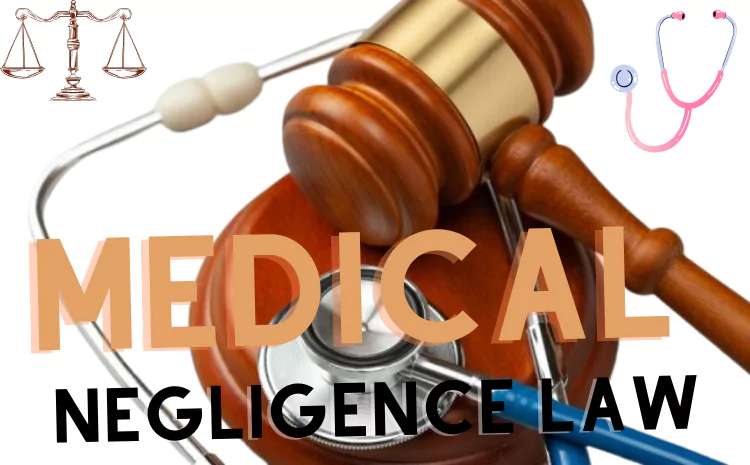Welcome to an enlightening journey into the realm of medical negligence law! In this blog post, readers will uncover the fundamental insights they need to navigate the intricate world of healthcare malpractice with confidence. Have you ever wondered about the responsibilities medical professionals bear towards their patients? Are you curious about how to distinguish between medical mishaps and genuine negligence? Look no further! With a warm and friendly tone, this blog unveils eight essential elements that unravel the mysteries of medical negligence law. Whether you’re curious or seeking a comprehensive understanding, this guide will break down complex concepts like the duty of care, the great standard of care, and patient harm. You’ll also discover the pivotal role of informed consent, the significance of expert testimonies, and the path to seeking rightful compensation. So, let’s embark on this empowering expedition together, demystifying medical negligence and arming you with essential knowledge to make informed choices. Your journey to understanding medical negligence law starts here.
Duty of Care: A Foundation of Trust
Imagine a world where every medical professional upholds a duty of care towards their patients – it’s not just a dream but a fundamental principle of medical negligence law. This duty obligates medical practitioners to provide treatment that aligns with the standards of their profession. Understanding this core concept lays the groundwork for recognizing when that duty might be breached, leading to potential medical negligence claims.
Standard of Care: Striving for Excellence
Every medical specialty comes with its expectations, the so-called standard of care. This standard represents the level of skill, attention, and caution a competent professional in the same field would provide under similar circumstances. It’s crucial to grasp this concept as it serves as a benchmark for determining whether a medical professional’s actions fell below the expected standard, potentially resulting in medical negligence.
Causation: Connecting the Dots
Step into the fascinating realm of medical negligence law and uncover the pivotal element of causation. In this friendly guide, readers will explore how causation forms the crucial bridge between medical negligence and patient harm. Imagine a puzzle where each piece is a vital clue – proving causation involves demonstrating that the negligence directly led to the harm suffered by a patient. This blog unravels the complexities of causation through clear explanations and relatable examples. By the end, readers will have a newfound understanding of how this element forms the linchpin in medical negligence cases, showcasing the intricate connection between medical actions and their consequences.
Breach of Duty: When Trust is Compromised
Picture a situation where a medical professional deviates from the standard of care, and that deviation causes harm. This is the essence of a breach of duty. Recognizing when a breach has occurred is integral to identifying instances of medical negligence. Medical negligence lawyers specialize in evaluating these breaches and guiding individuals through the legal process.
Patient Harm: Understanding the Consequences
In the realm of medical negligence law, patient harm takes centre stage. Whether it’s physical, emotional, or financial harm, understanding the types of harm that can result from medical negligence is key. Connecting the dots between a breach of duty and the harm experienced is essential for building a compelling case.
Informed Consent: Empowering Patient Choices
Communication and transparency form the crux of informed consent. Patients usually have the right to be informed about potential risks, alternatives, and the nature of medical procedures. Failure to obtain an informed consent can lead to medical negligence claims. By comprehending this aspect, patients can actively participate in their healthcare decisions.
Statute of Limitations: Timing Matters
The clock ticks when it comes to medical negligence compensation claims. This is where the statute of limitations steps in – a legal timeframe within which a claim must be filed. Understanding these time constraints is crucial, as missing the window might jeopardize the possibility of seeking compensation. Seeking advice from medical malpractice lawyers early on can help navigate this aspect effectively.
Compensation and Damages: Righting the Wrongs
When medical negligence leads to harm, compensation becomes a potential remedy. Economic and non-economic damages are two categories that encompass medical expenses, lost wages, pain, and also suffering. Exploring these avenues with the guidance of medical negligence lawyers can ensure that rightful compensation is pursued.
Conclusion
As the final gavel falls on this exploration of medical negligence law, our readers emerge informed and empowered advocates for their health and well-being. Remember, the world of medicine is intricate, but armed with the knowledge of duty of care, causation, informed consent, and more, you’re better equipped to navigate it. So, whether you’re a potential patient, a medical professional, or a curious soul, these eight key elements demystify the complexities of medical negligence law. By understanding the standards, grasping the intricacies, and acknowledging the importance of patient advocacy, you’re contributing to a safer healthcare landscape for all. This isn’t the end but rather the beginning of a journey towards fostering transparency, accountability, and a culture of informed decision-making. Keep these elements close, share them widely, and let the light of awareness guide your path. Here’s to a world where knowledge truly is the best medicine!

